

Image Missing
Information - Culture
Here is a little section about my culture - Black Hmong. It’s only a short bit as otherwise could take up many volumes. Here I will tell you about some of our culture, traditions and how we live.
Migration to Vietnam
We really should start with how we got here. The migration to Vietnam, Laos, Burma and Thailand started in the 1700s as the dominance of the Han Chinese grew under the Qing Dynasty. Although the Hmong have a strong cultural identity, the semi-nomadic lifestyle meant that they didn’t have any political structure so to speak. This made it hard to resist stronger forces, both Chinese and colonial.
Once settled, Hmong life also changed from a semi-nomadic to resident farming. This was a necessity as China is a huge country and there was just not the space to continue the traditional ways on the smaller pieces of land suitable and available in northern Vietnam.
Ethnicity
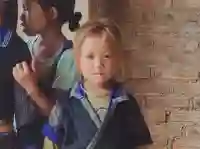

Image Missing


Image Missing
There are approximately one million Hmong living in Vietnam today. There are also many different types of Hmong - White Hmong, Green Hmong, Flower Hmong and Black Hmong.
Hmong also have some unique genetics for Asians. You can find people with their green eyes, brown or even naturally blonde hair. My sister had ginger / brown hair when she was a child growing up and that is nothing unusual around here.
Spirituality
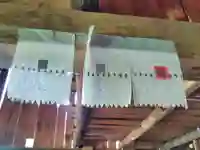

Image Missing
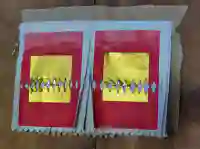

Image Missing
Hmong have a wide set of spiritual beliefs. While many Black Hmong were converted to Christianity in the 19th century by missionaries, today it is not so clear cut. Shamanism is still popular and many have a belief in both camps. For the other Hmong groups - shamanism is still the way.
For the followers of traditional Hmong spirituality, the shaman is the main communicator with the otherworld, able to see why and how someone got sick. Healing and sickness is seen as supernatural processes linked to cosmic and local supernatural forces. Rituals, which serve as a treatment, might include herbal remedies or offerings of livestock (pig, chicken or duck). Pigs are used for more serious occasions were as chickens are cheaper and used for less critical matters. These rituals also appear often in story telling.
House styles
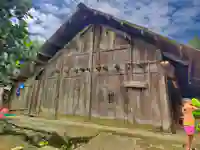

Image Missing


Image Missing
This has changed over the years of course like many things. Originally houses were designed to be able to be dismantled, taking just the key main timbers which could be dragged along by a water buffalo to the new location. The less essential parts were discarded as they could be easily replaced at the new location.
The layout of the Hmong house even today has a large central area used for eating, drinking and socialising. Cooking also used to be done in the centre of the house, handy for keeping warm in the winter months. Alas with no chimney or smoke extractor - things get rather smokey. The bedrooms typically are very small, just enough for a bed and some personal items. Smaller bedrooms are also easier to keep warm in the colder winter months. No houses have heating or air conditioning.
Just like the Amish though, when building a traditional house, friends and family all come to help with the construction. No payment is given but it is expected that the host provide a ceremonial pig for all the hardworking people as well as other food and drinks. As the houses are of simple construction, it does not take long. Just a few days to get the main frame up and roof on.
Changes since the 1990s
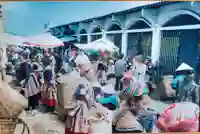

Image Missing
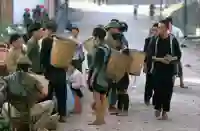

Image Missing
A lot has changed in the Sapa area. Back then there were no motorbikes, we had two horses for the family to get around on. Going to Lao Cai (the big town at the bottom of the mountain) even though 40km away was a days ride each way. There was no electricity either. Kerosene lamps were the order of the day and the area was closed to anyone not from the region unless they had special paperwork. In fact even till a few years ago foreigners needed government permission and to pay a fee to enter the valley at Ta Van.
As for traditional clothing, up until 2010-2015, most people wore the traditional clothing as they just did not have the money to buy store clothing. Now it is more reserved for special occasion or worn by older people who are just used to their traditional ways. There are still many traditional people up here. Most of the houses are still built in the traditional style - though the hard woods required for the main timbers are harder and far more expensive to get hold of so “hybrid” styles have started to appear. Newer homestays adhere to building regulations so use modern materials but with a traditional skin.
Sapa was also a very small town at the top of the valley. Things have changed there so much, I can hardly recognise the place. It gives some members of my family good jobs there though and the pay is much better than for farming. While it might not be to everyone’s taste, it’s been great to see new money and real opportunities for us. Back in the 1990s many people lived in poverty and thats not something I have an nostalgia for.
Story telling
It’s super popular. Really really popular. Come on tour with me and I will tell you some of my favourite stories.


Image Missing
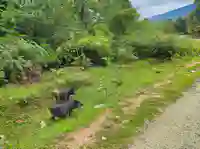

Image Missing
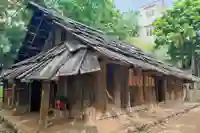

Image Missing


Image Missing